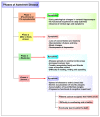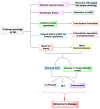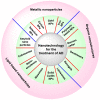Advances on Therapeutic Strategies for Alzheimer's Disease: From Medicinal Plant to Nanotechnology
- PMID: 35956796
- PMCID: PMC9369981
- DOI: 10.3390/molecules27154839
Advances on Therapeutic Strategies for Alzheimer's Disease: From Medicinal Plant to Nanotechnology
Abstract
Alzheimer's disease (AD) is a chronic dysfunction of neurons in the brain leading to dementia. It is characterized by gradual mental failure, abnormal cognitive functioning, personality changes, diminished verbal fluency, and speech impairment. It is caused by neuronal injury in the cerebral cortex and hippocampal area of the brain. The number of individuals with AD is growing at a quick rate. The pathology behind AD is the progress of intraneuronal fibrillary tangles, accumulation of amyloid plaque, loss of cholinergic neurons, and decrease in choline acetyltransferase. Unfortunately, AD cannot be cured, but its progression can be delayed. Various FDA-approved inhibitors of cholinesterase enzyme such as rivastigmine, galantamine, donepezil, and NDMA receptor inhibitors (memantine), are available to manage the symptoms of AD. An exhaustive literature survey was carried out using SciFinder's reports from Alzheimer's Association, PubMed, and Clinical Trials.org. The literature was explored thoroughly to obtain information on the various available strategies to prevent AD. In the context of the present scenario, several strategies are being tried including the clinical trials for the treatment of AD. We have discussed pathophysiology, various targets, FDA-approved drugs, and various drugs in clinical trials against AD. The goal of this study is to shed light on current developments and treatment options, utilizing phytopharmaceuticals, nanomedicines, nutraceuticals, and gene therapy.
Keywords: Alzheimer’s disease; gene therapy; nanomedicines; neurofibrillary tangles; nutraceuticals; pathophysiology; phytopharmaceuticals.
Conflict of interest statement
The authors declare no conflict of interest, financial or otherwise.
Figures








References
Publication types
MeSH terms
Substances
Grants and funding
LinkOut - more resources
Full Text Sources
Medical

